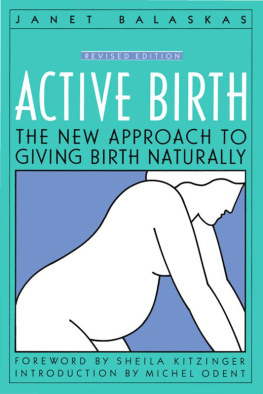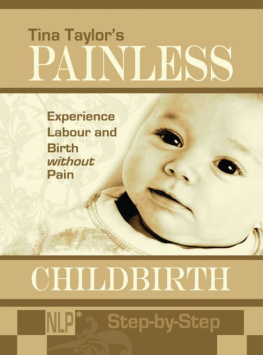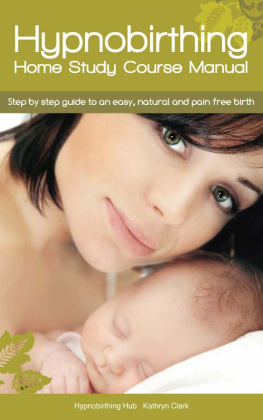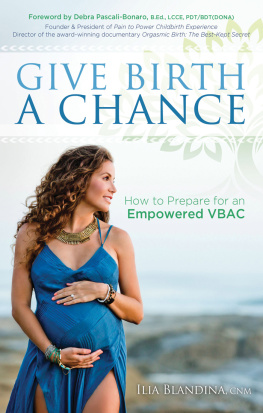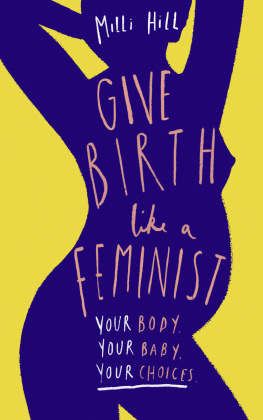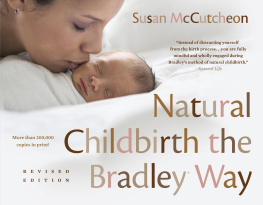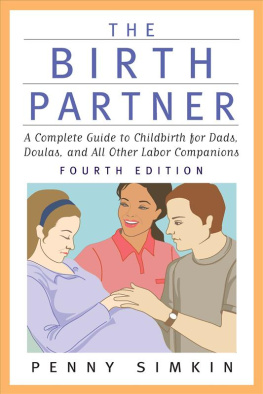The Harvard Common Press
535 Albany Street
Boston, Massachusetts 02118
www.harvardcommonpress.com
Copyright 1992 by Janet Balaskas
All rights reserved. No part of this publication may be reproduced or transmitted in any form or by any means, electronic or mechanical, including photocopy, recording, or any information storage or retrieval system, without permission in writing from the publisher.
First edition published in 1983 by Unwin Paperbacks, London, as Active Birth.
Second edition published in 1991 by Thorsons, an imprint of Grafton Books, London, as New Active Birth: A Concise Guide to Natural Childbirth.
This U.S. edition published in 1992 by The Harvard Common Press.
Printed in the United States of America.
Library of Congress Cataloging-in-Publication Data
Balaskas, Janet.
Active birth : the new approach to giving birth naturally / by Janet Balaskas ; foreword by Sheila Kitzinger ; introduction by Michel Odent.Rev. ed.
p. cm.
Includes bibliographical references (p. ) and index.
ISBN 1-55832-038-5
1. Active childbirth. 2. Exercise for women. I. Title.
RG662.B35 1992
618.4dc20 91-32334
978-1-55832-038-3
Photographs by Anthea Sieveking
Illustrations by Lucy Su and Laura McKechnie
Cover design by Jackie Schuman
20 19 18 17
Acknowledgments
First I would like to thank all of the mothers and their families whose experiences fill the pages of this book.
Thanks also to those who helped to produce it, especially Anthea Sieveking for the photographs, Linda Ziedrich for editing the U.S. edition, Penny Simkin for her thoughtful editorial suggestions, and the staff at the Harvard Common Press. And thanks to Sheila Kitzinger for introducing me to the Harvard Common Press, and to Jennifer Starisky, senior midwife at the Garden Hospital, for compiling the hospital's 1990 statistics especially for this book.
I am very grateful to my colleagues Lolly Stirk and Yvonne Moore for helping to establish the Active Birth Teachers Training Course; to Yehudi Gordon, Michel Odent, and midwives everywhere for their pioneering work; as well as yoga teachers Mina Semyon, Mary Stuart, and Lolly and John Stirk for their inspiration.
Profound thanks to Carole Eliott for her guidance and to her husband Norman Stannard for his healing energy. Most of all I would like to thank my four children for helping me discover the great joy of giving birth and being a mother and my husband Keith Brainin for his loving support and encouragement.
Foreword
Here is an important voice in childbirth. Janet Balaskas is speaking to those women who want to grow in self-awareness and to use their bodies actively in labor. In her childbirth classes Janet Balaskas stands for activity rather than passivity, for movement rather than immobilization, and tor a woman's right to choose whatever position she finds comfortable throughout labor and delivery.
The teaching in this book is revolutionary. Yet it is age-old. All over the world and throughout recorded history women have chosen upright positions to give birth, and it is only we in the West who have had the extraordinary notion that a woman should lie on her back with her legs in the air to deliver a baby.
But to get women upright is to do much more than help them find a comfortable posture. It is to turn them from passive patients into active birth-givers. It is to challenge the whole obstetric view of birth in Western society. This is based on the assumption that childbirth is a medical event that should be conducted in an intensive-care setting. The whole pregnancy is seen as a pathological condition terminated only by delivery. The modern high-tech obstetrician actively manages labor with all the technology of ultrasound, continuous electronic monitoring, and intravcnous oxytocin drip. Many obstetricians have never had the opportunity to see a truly natural birth. To turn the process of bringing new life into the world into one in which a woman becomes simply the body on the delivery table rather than an active birth-giver is a degradation of the mother's role in childbirth.
We are now beginning to discover the sometimes long-term destructive effects on the relationship between a mother and her baby, and on the family, of treating women as if they were merely containers to be relieved of their contents, and of concentrating attention on a bag of muscle and a birth canal, instead of relating to and caring for the person of whom the uterus and the vagina are a part.
Bonding is a fashionable term today. In many hospitals special time is devoted for bonding, and there must be few midwives and obstetricians who would not claim that they consider bonding important. But everything that happens after delivery is the outcome of what has gone before. Bonding is cither spontaneous and easy, or made virtually impossible by the atmosphere at delivery and by the care a woman is given as a person, not merely a "para 1," an elderly primigrvida, a maternal pelvis, a contracting uterus, or a dilating cervix.
The way we give birth is important to all of us because it has a great deal to do with the kind of society we want to live in, the significance of the coming to birth of a new person and a new family.
When we hand over responsibility for choosing between alternatives on the basis of what we believe to be right, we hand over responsibility for the quality of the society we, and our children, must live in.
Sheila Kitzinger
Preface
My first daughter, Nina, was born in 1970. I attended preparation classes and was hoping for a natural birth. I was active until strong labor began, and then I lay passively in bed, semireclining, for the last three hours. Fortunately there were no complications, and I managed, with enormous effort and the help of an unnecessary episiotomy, to give birth to her spontaneously.
I discovered active childbirth during the birth of my second daughter, Kim. During this pregnancy I had taken up yoga and enjoyed practicing the yoga postures, finding some of them particularly beneficial as the pregnancy advanced. A study of the history of childbirth revealed how some of the yoga postures, especially squatting, are similar to birth positions used throughout the ages. An anatomical study of the female pelvis clarified that these postures relaxed and "opened" the pelvic canal and were ideal movements to adopt when trying to evacuate its contents.
Consequently, when it came to labor, I began by following the usual instructions given in prenatal classes and made myself comfortable in the semireclining position, focusing on some breathing techniques. Progress was slow, and while the breathing techniques kept me calm and centered, they seemed to distract me from the labor. Eventually I decided to get up and try some of the positions I had practiced during pregnancy. The change in progress was dramatic, and it dawned on me, for the first time, that it is necessary for a woman to move and to be in harmony with gravity in order to help her body to open up in labor. I realized then that squatting, and its variations, is the logical position for any woman to adopt while giving birth and is the most important position to practice during pregnancy. I resolved then and there to improve my squatting before my next labor.
During my son Iasonas's birth I kept activewalking, squatting, and kneelingand gave birth to him on all fours. It was a marvelous experience. I had an entirely new sense of control and knew instinctively what to do. I was up within hours of the birth and felt none of the aches and pains I had for a week or two after my previous births, despite the fact that he was almost a 10-pound baby. I was astonished how fit and well I felt after the birth, and I suffered no exhaustion or depression in the following months.
Next page
